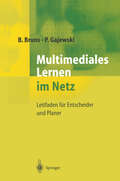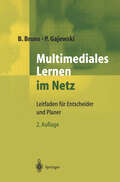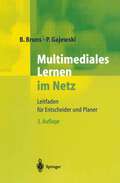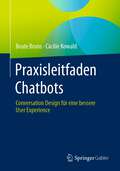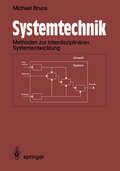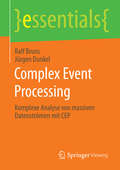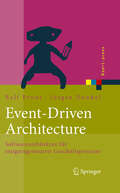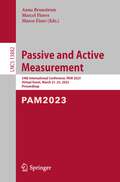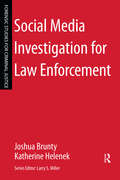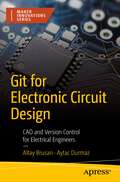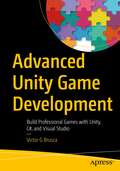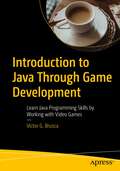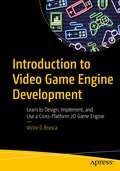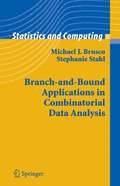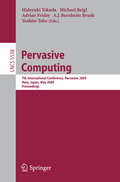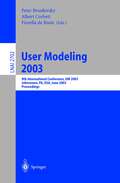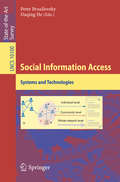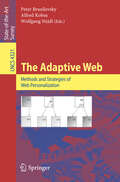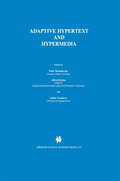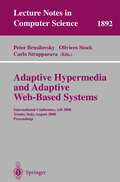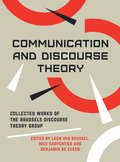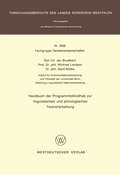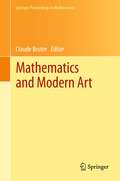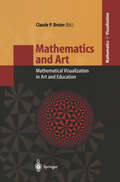- Table View
- List View
Multimediales Lernen im Netz: Leitfaden für Entscheider und Planer
by Beate Bruns Petra Gajewski"Ist das Lernen mit Hilfe von Rechnernetzen eine für unser Unternehmen nützliche Innovation?" Dieses Buch bietet Entscheidungsträgern in der Wirtschaft eine umfassende doch kompakte Orientierung, die letztlich zur Beantwortung dieser facettenreichen Frage führen sollte. Für die weitere Analyse wird der Leser durch zahlreiche Checklisten, Analysen der bestehenden Lehrangebote, Hinweisen auf weiterführende Literatur und Internetquellen unterstützt. Der notwendige Praxisbezug wird durch die einschlägige Berufs- und Gremientätigkeit des Autorinnenteams gewährleistet.
Multimediales Lernen im Netz: Leitfaden für Entscheider und Planer
by Beate Bruns Petra GajewskiDie rasche Neuauflage wurde wegen des großen Erfolgs des Werks notwendig. Das Thema "Lernen im Internet" erzeugt momentan ein breites Interesse weit über den Kreis derjenigen hinaus, die sich üblicherweise mit Fortbildung beschäftigen. Vor allem im Bereich der betrieblichen Organisation unter Effizienzgesichtspunkten spielt es eine bedeutende Rolle. "Ist das Lernen mit Hilfe von Rechnernetzen eine für unser Unternehmen nützliche Innovation?" Dieses Buch bietet Entscheidungsträgern in der Wirtschaft eine umfassende doch kompakte Orientierung, die letztlich zur Beantwortung dieser facettenreichen Frage führen sollte. Für die weitere Analyse wird der Leser durch zahlreiche Checklisten, Analysen der bestehenden Lehrangebote, Hinweise auf weiterführende Literatur und Internetquellen unterstützt. Der notwendige Praxisbezug wird durch die einschlägige Berufs- und Gremientätigkeit des Autorinnenteams gewährleistet.
Multimediales Lernen im Netz: Leitfaden für Entscheider und Planer
by Beate Bruns Petra GajewskiIst die Einführung von E-Learning und E-Collaboration eine für unser Unternehmen nützliche Investition? Das ist eine Frage, auf die Sie nach Lektüre dieses Buches mit Sicherheit eine begründete Antwort geben werden! Multimediales Lernen im Netz, E-Learning und E-Collaboration haben sich in den letzten Jahren mit Riesenschritten weiter entwickelt. Viele Organisationen setzen inzwischen E-Learning erfolgreich ein und haben zahlreiche praktische Erfahrungen gesammelt. Multimediales Lernen im Netz bietet Entscheidungsträgern aus Personal und IT eine umfassende und zugleich kompakte Orientierung. Analysen, Checklisten, Hintergrundinformationen und zahlreiche praktische Beispiele runden diesen leicht verständlichen und lebendigen Leitfaden für E-Learning und E-Collaboration ab. Die einschlägige Berufs- und Gremientätigkeit der Autorinnen gewährleisten den hohen Praxisbezug.
Praxisleitfaden Chatbots: Conversation Design für eine bessere User Experience
by Beate Bruns Cäcilie KowaldChatbots sind eine vielversprechende Form der Kommunikation – jedoch schaffen es bisher nur wenige echten Mehrwert zu bieten. In diesem Praxisleitfaden lernen Sie Schritt für Schritt den gesamten Prozess der Chatbot-Entwicklung kennen: Von der Definition des Use Case über die Persönlichkeit des Chatbots und die Modellierung des Dialogablaufs bis hin zu Pilotbetrieb und Roll-Out. Sie erfahren für jeden Schritt, welche Strategien sich bewährt haben und was bei der Umsetzung besonders zu beachten ist. Einen Schwerpunkt bildet das Conversation Design, denn es ist entscheidend für eine gelungene User Experience, für Akzeptanz und langfristigen Erfolg des Chatbots. Anhand zahlreicher Fallbeispiele aus der Praxis und mit klar formulierten Handlungsempfehlungen zeigen die Autorinnen ganz konkret, wie erfolgreiche Chatbots gelingen.Der Inhalt• Bedarfsanalyse, Use Case und User Stories• Planung der Chatbot-Entwicklung• Chatbot-Persönlichkeit und Conversational Experience• Conversation Design, Proof-of-Concept und Prototyping• Dialogablauf und Copywriting • Implementierung, Finetuning und Roll-Out• Evaluation und Continuous Improvement
Systemtechnik: Ingenieurwissenschaftliche Methodik zur interdisziplinären Systementwicklung
by Michael BrunsSystemtechnik ("systems engineering") verallgemeinert Konzepte bzw. Methoden der Ingenieurwissenschaften und stellt damit Instrumente für die Lösung interdisziplinärer, komplexer Probleme bereit. Systematische Vorgehensweisen erlauben die sinnvolle Gliederung technisch-organisatorischer Projekte. Es werden die Systemdefinitionen und Strukturkonzepte allgemeingültig dargestellt als Basis für interdisziplinäre Ansätze. Die Anwendungsbereiche entstammen den Ingenieurwissenschaften (Informationsverarbeitung, Automatisierungstechnik, Projektmanagement); angesprochen sind alle, die sich mit Organisation und Management befassen.
Complex Event Processing: Komplexe Analyse von massiven Datenströmen mit CEP (essentials)
by Ralf Bruns Jürgen DunkelRalf Bruns und Jürgen Dunkel bieten eine kompakte Einführung in die Grundprinzipien von Complex Event Processing (CEP), das eine extrem leistungsfähige Softwaretechnologie zur systematischen Analyse von massiven Datenströmen in Echtzeit darstellt. Die Autoren stellen die wesentlichen Sprachkonzepte der Ereignisverarbeitung Schritt für Schritt vor. Eine Fallstudie aus dem M2M-Bereich verdeutlicht die praktische Anwendung von CEP. Moderne Unternehmen stehen vor der Herausforderung mit immer größeren Datenmengen umgehen zu müssen. Neben immensen statischen Datenbeständen ist es entscheidend, auch kontinuierlich eintreffende Datenströme effizient zu nutzen, um geschäftliche Entscheidungen situationsabhängig treffen zu können. Mit CEP ist es möglich, hochfrequente Datenströme intelligent zu analysieren und daraus zeitnah operative Unternehmensentscheidungen abzuleiten. CEP steht für eine neue Qualität von Unternehmensanwendungen – agil und effizient.
Event-Driven Architecture: Softwarearchitektur für ereignisgesteuerte Geschäftsprozesse (Xpert.press)
by Ralf Bruns Jürgen DunkelGeschäftsprozesse in Unternehmen sind häufig ereignisgesteuert. Denn im Geschäftsumfeld treten Ereignisse auf, auf die angemessen und möglichst in Echtzeit reagiert werden muss, etwa in Sensornetzwerken oder im automatischen Wertpapierhandel. Event-Driven Architecture (EDA) ist ein neues Paradigma der Softwarearchitektur, das auf der Verarbeitung von Ereignissen beruht. Das Buch diskutiert die Grundprinzipien von EDA, führt in die wichtigsten Konzepte der Ereignisverarbeitung ein und veranschaulicht deren Umsetzung anhand einer Fallstudie.
Passive and Active Measurement: 24th International Conference, PAM 2023, Virtual Event, March 21–23, 2023, Proceedings (Lecture Notes in Computer Science #13882)
by Anna Brunstrom Marcel Flores Marco FioreThis book constitutes the proceedings of the 24th International Conference, PAM 2023, held as a virtual event, March 21–23, 2023.The 18 full papers and 9 short papers presented in this volume were carefully reviewed and selected from 80 submissions. The papers are organized in the following topical sections: VPNs and Infrastructure; TLS; Applications; Measurement Tools; Network Performance; Topology; Security and Privacy; DNS; and Web.
Social Media Investigation for Law Enforcement
by Joshua Brunty Katherine HelenekSocial media is becoming an increasingly important—and controversial—investigative source for law enforcement. Social Media Investigation for Law Enforcement provides an overview of the current state of digital forensic investigation of Facebook and other social media networks and the state of the law, touches on hacktivism, and discusses the implications for privacy and other controversial areas. The authors also point to future trends.
Social Media Investigation for Law Enforcement
by Joshua Brunty Katherine HelenekSocial media is becoming an increasingly important—and controversial—investigative source for law enforcement. Social Media Investigation for Law Enforcement provides an overview of the current state of digital forensic investigation of Facebook and other social media networks and the state of the law, touches on hacktivism, and discusses the implications for privacy and other controversial areas. The authors also point to future trends.
Git for Electronic Circuit Design: CAD and Version Control for Electrical Engineers (Maker Innovations Series)
by Altay Brusan Aytac DurmazWork with Git and avoid dangerous mishaps in this popular, cooperative environment, even if you have no software engineering background or previous experience with Git. This book will teach you the basic principles of working cooperatively in Git with software engineers and other team members to handle issues the GUI can’t. You'll start by learning the fundamentals of the Git environment and commands. Concepts such as commits, branches, and Git organization are discussed. To avoid bogging you down with software terminology, advanced topics like setting up a Git server are ignored. Descriptions are worded to keep you away from technical specifications. Examples are presented in easily digestible text files and focus on realistic scenarios and concerns without delving into one-off or advanced, oddball situations. You can see the results without focusing on the jargon. Once you understand the basics of Git, you’ll design a digital system circuit using a computer aided design (CAD) tool. You’ll learn to collaborate effectively through Git between team members, incorporate continuous development philosophy, work with project documentation, and build a solid project structure. Finally, you'll see how Git can also ease maintenance tasks and provide CAD designers unique opportunities. What You'll LearnWork with the Git-bash environmentIncorporate continuous development philosophyDiscover the links between Git and modern CAD programsWho This Book Is ForElectrical engineers active in device manufacturing and other engineers and students unfamiliar with Git.
Advanced Unity Game Development: Build Professional Games with Unity, C#, and Visual Studio
by Victor G BruscaJump start your Unity game development journey with a detailed review of a complete, professionally built game using Unity, C#, and Visual Studio. Gain invaluable experience with code structure, project structure, centralization of game state data, controlled initialization of script components, AI opponents, multiple input sources, player preferences, a full HUD and menu system, music and sound effects, level/track building, and more. Author Victor Brusca walks you through the game’s code, scripts, and overall structure, all the while showing you how the code works within the Unity engine to define a complete, refined game. Starting with game specifications, the book covers base classes, basic interaction classes, advanced interaction classes, helper classes, input classes, and abstraction of raw input. Next, you'll dive into the menu system and see how a full, complete menu and HUD are coded and set up in the project through a detailed review of the code and working examples. Subsequently, you’ll gain insight on player and game state management, and the author will demystify the component-based structure of Unity games by demonstrating how to maintain order and centralization. Lastly, you will review pertinent build and project settings while learning techniques to profile and check the performance of your games, and tie it all together by building a new racetrack for the included game project. On completing this book, you’ll have gained experience through the detailed review of a hover car racing game using C#, Unity Coding, Visual Studio, Unity C# Project Management, Unity Environment, Unity Project Management and more.What You Will LearnUnderstand Unity project design and implementation with regard to code base and scene hierarchy/game objectsLearn to implement game mechanics connected to Unity scene game objects with working demonstrationsReview professional topics, such as AI opponents, data persistence, menu systems, etc., and implement in the included projectCreate a complete game from ground up using prefab models and the code reviewed throughout the text Who This Book Is ForReaders with some coding experience, an understanding of classes in an OOP language, and solid experience using the Unity Editor. The code is reviewed and explained in detail on a class-by-class basis while also providing an overview of the overall structure of the code base, project, and scenes.
Introduction to Java Through Game Development: Learn Java Programming Skills by Working with Video Games
by Victor G. BruscaInterested in learning how to program with Java? Let’s face it, the best way to learn to program is by writing programs. This can be a daunting proposition with the specter of hours of simple command line example programs hanging over your head. Fear not! Now you can learn to program in Java in a fun way by working on video games. With this book, you’ll get to work with three Java game projects and have access to the complete game code for each project, including a full Java game engine. After completing Introduction to Java through Game Development, you’ll be proficient in Java programming, having worked with the language’s fundamental aspects throughout the text, and will be ready to further your Java and game programming expertise with confidence.What You'llMaster the fundamentals of the Java programming languageUse different data structures like arrays, lists, stacks, and queuesUnderstand game programming basics including the main game loopGain experience working with three different game projects via the book’s coding challengesWork with the 2D game engine that powers the book's included games and learn to create your own new game projectsUnderstand advanced Java topics like classes, encapsulation, inheritance, and polymorphismWork with exceptions and how to use debugging techniques to trace through codeSharpen your skills with over a dozen coding challenges that test your abilities with a development task on a real game projectWho This Book Is ForThis book requires little to no programming experience to understand and benefit from the text.
Introduction to Video Game Engine Development: Learn to Design, Implement, and Use a Cross-Platform 2D Game Engine
by Victor G BruscaStart your video game development journey by learning how to build a 2D game engine from scratch. Using Java (with NetBeans as your IDE and using Java’s graphics framework) or by following along in C# (with Visual Studio as your IDE and using the MonoGame framework), you’ll cover the design and implementation of a 2D game engine in detail. Each class will be reviewed with demonstration code. You’ll gain experience using the engine by building a game from the ground up. Introduction to Video Game Engine Development reviews the design and implementation of a 2D game engine in three parts. Part 1 covers the low-level API class by class. You’ll see how to abstract lower-level functionality and design a set of classes that interact seamlessly with each other. You’ll learn how to draw objects, play sounds, render text, and more. In Part 2, you’ll review the mid-level API that is responsible for drawing the game, loading resources, and managing user input. Lastly, in Part 3, you’ll build a game from the ground up following a step-by-step process using the 2D game engine you just reviewed. On completing this book, you’ll have a solid foundation in video game engine design and implementation. You’ll also get exposure to building games from scratch, creating the solid foundation you’ll need to work with more advanced game engines, and industry tools, that require learning complex software, APIs, and IDEs. What You Will Learn Gain experience with lower-level game engine APIs and abstracting framework functionalityWrite application-level APIs: launching the game, loading resources, settings, processing input, and more Discover cross-platform APIs in the game engine projects written in both Java and C#/MonoGame Develop games with an SDK-based game engine and simplified tool chain focused on direct control of the game through codeMaster creating games by using the game engine to build a game from the ground up with only code and an IDE Who This Book Is For Those of you out there with some programming experience, moderate to advanced, who want to learn how to write video games using modern game engine designs.
Branch-and-Bound Applications in Combinatorial Data Analysis (Statistics and Computing)
by Michael J. Brusco Stephanie StahlThis book provides clear explanatory text, illustrative mathematics and algorithms, demonstrations of the iterative process, pseudocode, and well-developed examples for applications of the branch-and-bound paradigm to important problems in combinatorial data analysis. Supplementary material, such as computer programs, are provided on the world wide web. Dr. Brusco is an editorial board member for the Journal of Classification, and a member of the Board of Directors for the Classification Society of North America.
Pervasive Computing: 7th International Conference, Pervasive 2009, Nara, Japan, May 11-14, 2009, Proceedings (Lecture Notes in Computer Science #5538)
by A. J. Bernheim Brush Yoshito Tobe Hideyuki Tokuda Michael Beigl Adrian FridayThis book constitutes the refereed proceedings of the 7th International Conference on Pervasive Computing, Pervasive 2009, held in Nara, Japan, in May 2009. The 20 revised full papers and 7 revised short papers presented were carefully reviewed and selected from 147 initial submissions. The papers are organized in topical sections on digital displays, navigation, at home with pervasive applications, sensors, sensors, everywhere, working together, tagging and tracking, methods and tools, and the importance of context.
User Modeling 2003: 9th International Conference, UM 2003, Johnstown, PA, USA, June 22-26, 2003, Proceedings (Lecture Notes in Computer Science #2702)
by Peter Brusilovsky Albert Corbett Firoella De RosisThe refereed proceedings of the 9th International Conference on User Modeling, UM 2003, held in Johnstown, PA, USA in June 2003. The 20 revised full papers and 28 revised poster papers presented together with 12 abstracts were carefully reviewed and selected from 106 submissions. The papers are organized in topical sections on adaptive hypermedia, adaptive Web, natural language and dialogue, plan recognition, evaluation, emerging issues of user modeling, group modeling and cooperation, applications, student modeling, learning environments - natural language and paedagogy, and mobile and ubiquitous computing.
Social Information Access: Systems and Technologies (Lecture Notes in Computer Science #10100)
by Peter Brusilovsky Daqing HeSocial information access is defined as a stream of research that explores methods for organizing the past interactions of users in a community in order to provide future users with better access to information. Social information access covers a wide range of different technologies and strategies that operate on a different scale, which can range from a small closed corpus site to the whole Web.The 16 chapters included in this book provide a broad overview of modern research on social information access. In order to provide a balanced coverage, these chapters are organized by the main types of information access (i.e., social search, social navigation, and recommendation) and main sources of social information.
The Adaptive Web: Methods and Strategies of Web Personalization (Lecture Notes in Computer Science #4321)
by Peter Brusilovsky Alfred Kobsa Wolfgang NejdlThis state-of-the-art survey provides a systematic overview of the ideas and techniques of the adaptive Web and serves as a central source of information for researchers, practitioners, and students. The volume constitutes a comprehensive and carefully planned collection of chapters that map out the most important areas of the adaptive Web, each solicited from the experts and leaders in the field.
Adaptive Hypertext and Hypermedia
by Peter Brusilovsky Alfred Kobsa Julita VassilevaHypertext/hypermedia systems and user-model-based adaptive systems in the areas of learning and information retrieval have for a long time been considered as two mutually exclusive approaches to information access. Adaptive systems tailor information to the user and may guide the user in the information space to present the most relevant material, taking into account a model of the user's goals, interests and preferences. Hypermedia systems, on the other hand, are `user neutral': they provide the user with the tools and the freedom to explore an information space by browsing through a complex network of information nodes. Adaptive hypertext and hypermedia systems attempt to bridge the gap between these two approaches. Adaptation of hypermedia systems to each individual user is increasingly needed. With the growing size, complexity and heterogeneity of current hypermedia systems, such as the World Wide Web, it becomes virtually impossible to impose guidelines on authors concerning the overall organization of hypermedia information. The networks therefore become so complex and unstructured that the existing navigational tools are no longer powerful enough to provide orientation on where to search for the needed information. It is also not possible to identify appropriate pre-defined paths or subnets for users with certain goals and knowledge backgrounds since the user community of hypermedia systems is usually quite inhomogeneous. This is particularly true for Web-based applications which are expected to be used by a much greater variety of users than any earlier standalone application. A possible remedy for the negative effects of the traditional `one-size-fits-all' approach in the development of hypermedia systems is to equip them with the ability to adapt to the needs of their individual users. A possible way of achieving adaptivity is by modeling the users and tailoring the system's interactions to their goals, tasks and interests. In this sense, the notion of adaptive hypertext/hypermedia comes naturally to denote a hypertext or hypermedia system which reflects some features of the user and/or characteristics of his system usage in a user model, and utilizes this model in order to adapt various behavioral aspects of the system to the user. This book is the first comprehensive publication on adaptive hypertext and hypermedia. It is oriented towards researchers and practitioners in the fields of hypertext and hypermedia, information systems, and personalized systems. It is also an important resource for the numerous developers of Web-based applications. The design decisions, adaptation methods, and experience presented in this book are a unique source of ideas and techniques for developing more usable and more intelligent Web-based systems suitable for a great variety of users. The practitioners will find it important that many of the adaptation techniques presented in this book have proved to be efficient and are ready to be used in various applications.
Adaptive Hypermedia and Adaptive Web-Based Systems: International Conference, AH 2000, Trento, Italy, August 28-30, 2000 Proceedings (Lecture Notes in Computer Science #1892)
by Peter Brusilovsky Oliviero Stock Carlo StrapparavaThis book constitutes the refereed proceedings of the first International Conference on Adaptive Hypermedia and Adaptive Web-Based Systems, AH 2000, held in Trento, Italy, in August 2000.The 22 revised full papers presented together with 35 short papers were carefully reviewed and selected from 55 submissions. Among the topics covered are hypertext, user modeling, machine learning, natural language generation, information retrieval, intelligent tutoring systems, cognitive science, web-based education, etc.
Communication and Discourse Theory: Collected Works of the Brussels Discourse Theory Group
by Leen Van Brussel Nico Carpentier Benjamin De CleenDrawing on a variety of case studies, ranging from the politics of reality TV to the representation of populism, Communication and Discourse Theory highlights both the radical contingent nature and the hegemonic workings of media and communication practices.
Handbuch der Programmbibliothek zur linguistischen und philologischen Textverarbeitung (Forschungsberichte des Landes Nordrhein-Westfalen #2939)
by Jan BrustkernMathematics and Modern Art: Proceedings of the First ESMA Conference, held in Paris, July 19-22, 2010 (Springer Proceedings in Mathematics #18)
by Claude BruterThe link between mathematics and art remains as strong today as it was in the earliest instances of decorative and ritual art. Arts, architecture, music and painting have for a long time been sources of new developments in mathematics, and vice versa. Many great painters have seen no contradiction between artistic and mathematical endeavors, contributing to the progress of both, using mathematical principles to guide their visual creativity, enriching their visual environment with the new objects created by the mathematical science.Owing to the recent development of the so nice techniques for visualization, while mathematicians can better explore these new mathematical objects, artists can use them to emphasize their intrinsic beauty, and create quite new sceneries. This volume, the content of the first conference of the European Society for Mathematics and the Arts (ESMA), held in Paris in 2010, gives an overview on some significant and beautiful recent works where maths and art, including architecture and music, are interwoven. The book includes a wealth of mathematical illustrations from several basic mathematical fields including classical geometry, topology, differential geometry, dynamical systems. Here, artists and mathematicians alike elucidate the thought processes and the tools used to create their work
Mathematics and Art: Mathematical Visualization in Art and Education (Mathematics and Visualization)
by Claude P. BruterRecent progress in research, teaching and communication has arisen from the use of new tools in visualization. To be fruitful, visualization needs precision and beauty. This book is a source of mathematical illustrations by mathematicians as well as artists. It offers examples in many basic mathematical fields including polyhedra theory, group theory, solving polynomial equations, dynamical systems and differential topology.For a long time, arts, architecture, music and painting have been the source of new developments in mathematics. And vice versa, artists have often found new techniques, themes and inspiration within mathematics. Here, while mathematicians provide mathematical tools for the analysis of musical creations, the contributions from sculptors emphasize the role of mathematics in their work.
